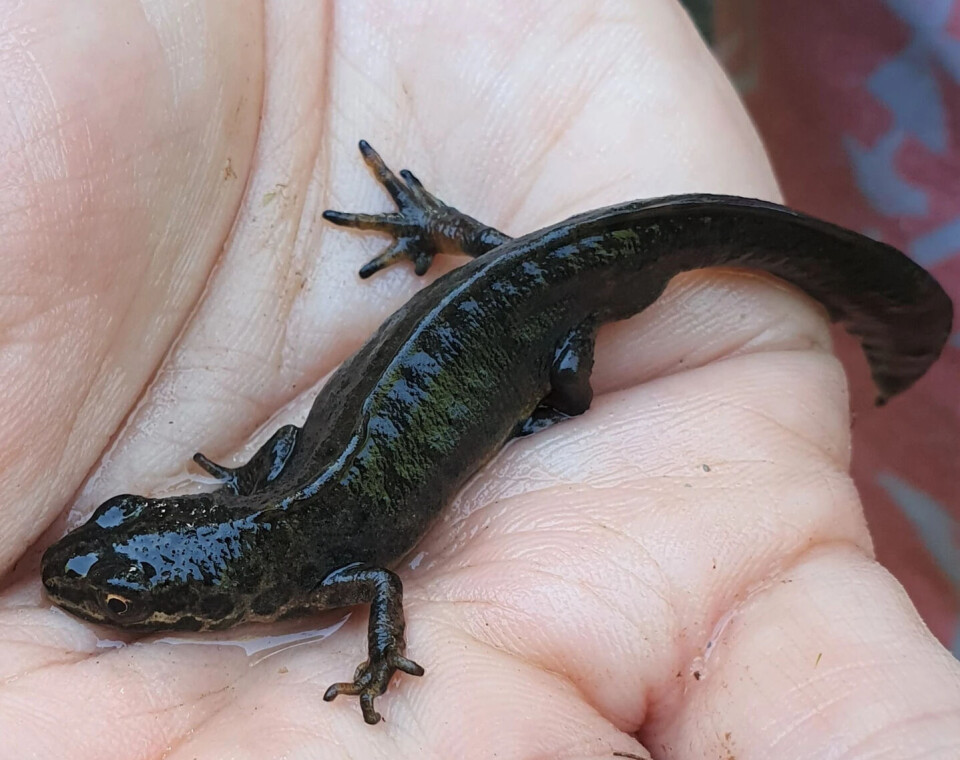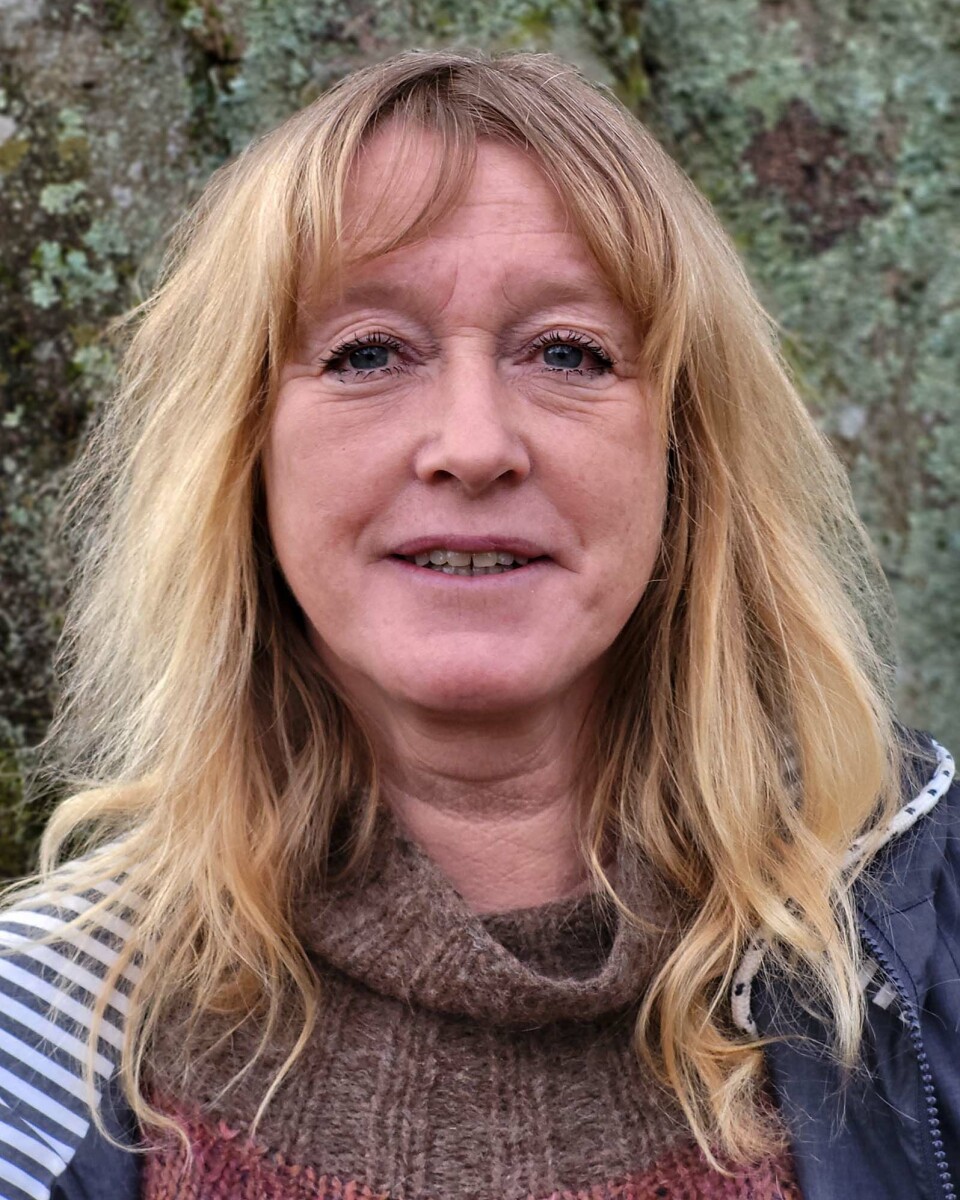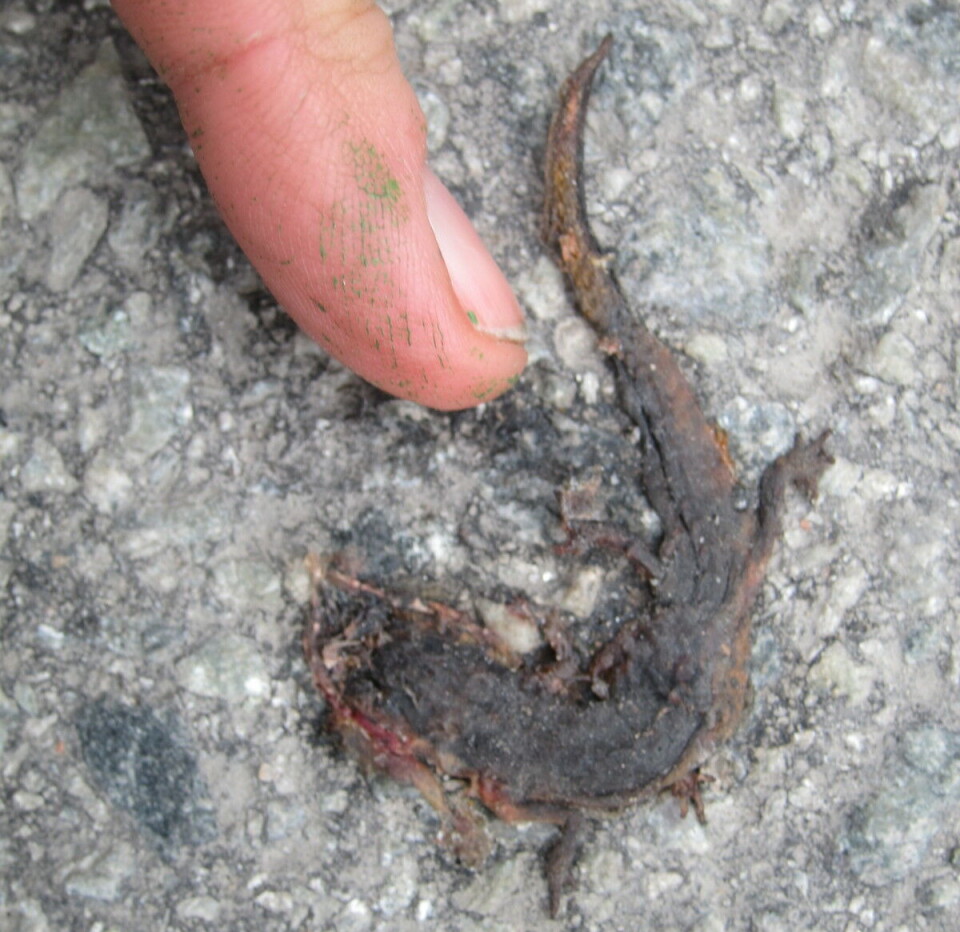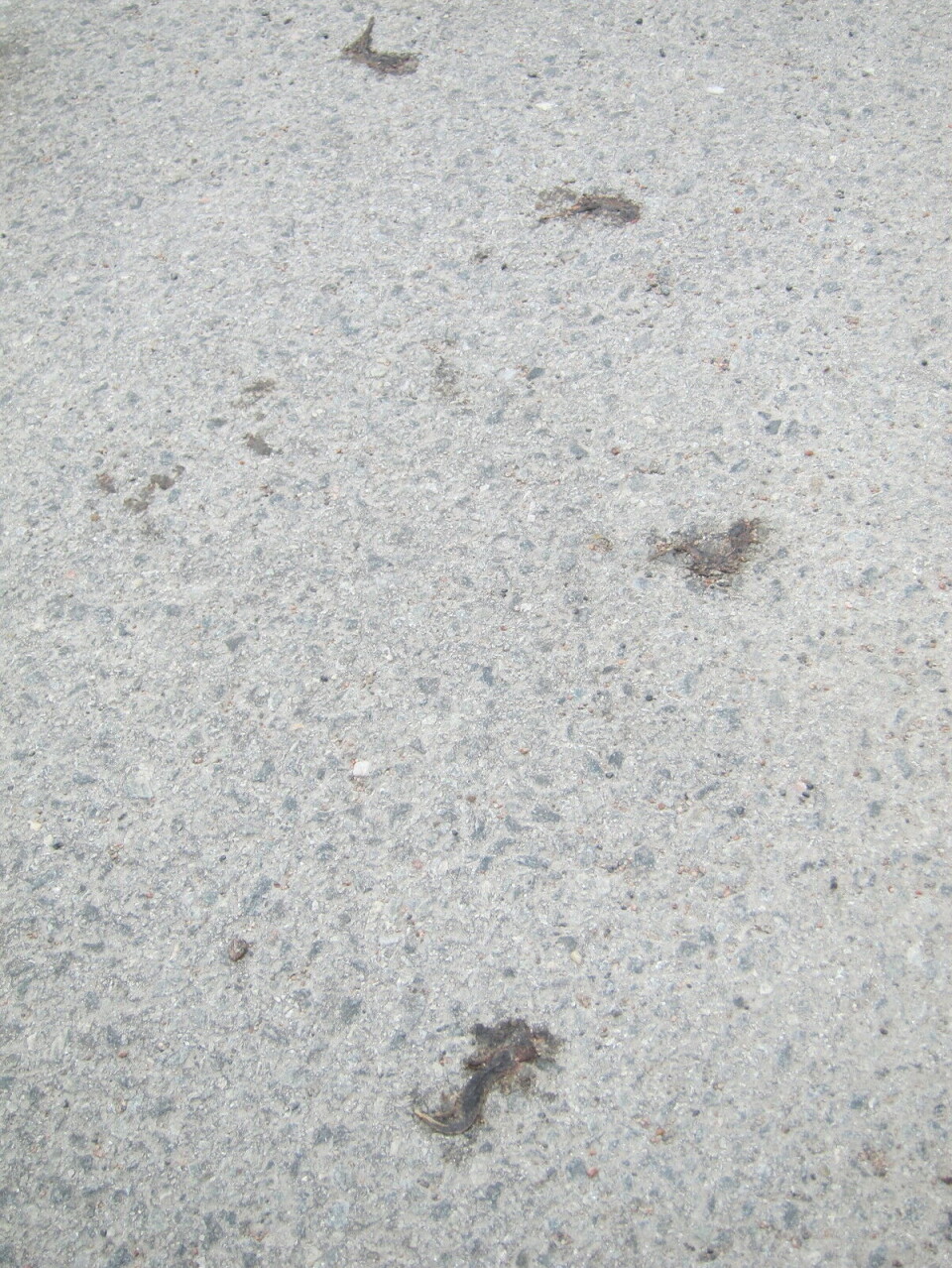THIS CONTENT IS BROUGHT TO YOU BY THE University of Agder - read more

Difficult to spot: Over 100 salamanders trampled flat in a parking lot
Salamanders live both in water and on land. They now come out in the evenings and can be hard to detect.
Holding a salamander in your hand can be fun. It tickles a bit when they move, they have silky smooth bellies, and the males look like little dragons.
They have now woken up from hibernation and are heading to the nearest pond to breed.
Watch out in the dark
Flattened salamanders are a common sight on illuminated paths around ponds in spring when joggers are out in the evening. Salamanders crawl out of their hiding places on land in the dark when they head out to the pond to breed.
“Small salamanders become more rigid when they get cold in the evening and resemble sticks, which makes it difficult for joggers to spot then,” says Beate Strøm Johansen.
She is a researcher and zoologist at the Natural History Museum and Botanical Garden at the University of Agder.
She counted 110 flattened salamanders in the parking lot of Voie church in southern Norway after an event in the evening. There is a pond close to the church. Salamanders rarely go farther than about 800 metres from their pond.
“If you want to help them, you can walk with a flashlight and place them by the water's edge so that no one steps on them, if you know that the salamanders have a dangerous way home,” she says.

Take care of habitats
Fortunately, the small salamander is no longer on the red list, but if we want to preserve it, we must also take care of its habitats.
“It's important to regularly clean ponds; otherwise, they will become overgrown, and the salamanders will disappear. But it's not enough to just take care of the pond; we must also look after the surrounding habitat,” the zoologist says.
Often, roads and houses are built very close to salamanders’ habitats. Ponds that fill up or dry out, marshy areas that are drained, and the introduction of fish or ducks also cause problems.
Politicians and developers need to understand this, Strøm Johansen believes, and it is not always easy. It requires knowledge and a relationship with nature for such priorities to be taken into account when development plans and municipal plans are drawn up.

Live on land and in water
The salamander is an amphibian, and the adult salamander alternates between a life on land and in water. They have lungs to breathe with and can make a small croak if they get annoyed.
They lay eggs that hatch into larvae in ponds and tarns, empty of fish. The larvae spend their first summer in the pond and almost always return to the same place to breed a few years later.
They mostly stay under tree roots and in small holes during the day before crawling out at night. It is not uncommon to come across salamanders in sheds and basements.
The salamander is a small predator that eats insects, earthworms, and other small creatures. They can also catch small fish, tadpoles, and other salamanders. The larvae eat a lot of water fleas.
They themselves are food for birds, fish, worms, and mammals. The salamander finds its prey using both the sense of sight and smell, as well as the perception of movement.
There are two species in Norway: the northern crested newt and the smooth newt.
The northern crested newt is approximately 10-16 centimetres long and can live for up to 16 years in the wild. The smooth newt grows to about 6-10 centimetres. It usually lives for 3-8 years, but smooth newts up to 12 years old have been recorded in the wild.

Are you curious?
If you want to know where the salamander ponds in Norway are, you can visit Artsdatabanken (Species Database).
If you want, you can create an account on Artsobservasjoner (Species Observations), where you can record observations of plants, animals, and fungi. These websites are tools and meeting places for nature enthusiasts to easily keep track of their own and others' findings, as well as exchange knowledge and experiences.
The websites are used by public administration, researchers, and others who work with species findings.
Reference:
Fog et al. Nordens padder og krybdyr (Nordic toads and reptiles), Gad, 1997. ISBN: 9788712029823
———
Read the Norwegian version of this article on forskning.no

This content is paid for and presented by the University of Agder
This content is created by the University of Agder's communication staff, who use this platform to communicate science and share results from research with the public. The University of Agder is one of more than 80 owners of ScienceNorway.no. Read more here.
More content from the University of Agder:
-
This researcher has helped more economics students pass their maths exams
-
There are many cases of fathers and sons both reaching elite level in football. Why is that?
-
How we used plants to protect ourselves from evil
-
What is it like for nurses to promote health behind bars?
-
This can make life easier for new maths teachers
-
Norwegian women were burned at the stake here




































